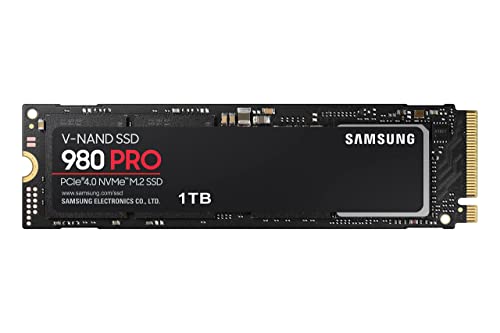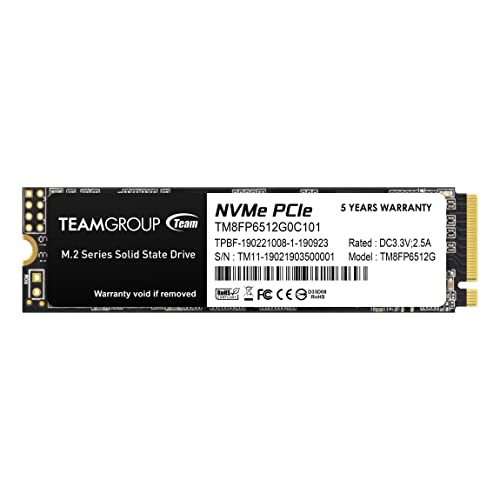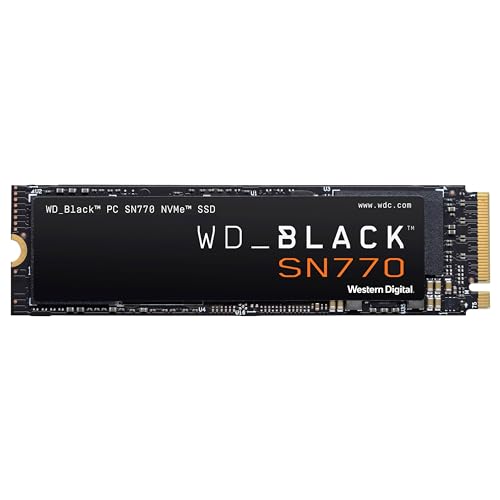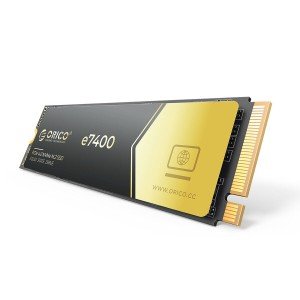High‑speed NVMe storage is revolutionizing the way data is accessed in high performance PCs. With significantly lower latency and rapid read/write speeds compared to traditional storage solutions, NVMe drives are essential for boosting system responsiveness and reducing load times.
NVMe drives utilize PCI Express lanes to achieve blazing‑fast data transfers, making them ideal for boot drives, applications, and gaming installs. The rapid performance leads to improved multitasking capabilities and near‑instantaneous file access. Paired with high‑speed memory, NVMe storage enables smoother system operation and quicker content rendering.
Ensure that your motherboard supports NVMe PCIe slots and install the drive in the appropriate slot for maximum throughput. Regular firmware updates and proper thermal management are key to sustaining peak NVMe performance. Benchmark your system before and after installation to monitor improvements and ensure stable operation.
Integrating high‑speed NVMe storage into your build can dramatically enhance performance and responsiveness. With careful installation, regular maintenance, and proper system configuration, NVMe drives provide the speed necessary to meet the demands of modern high performance applications.
Definitive Guide to High-Speed NVMe Storage for Maximum Performance Boost
Explore how next-generation NVMe drives transform modern PCs into ultra-responsive workstations and gaming rigs. From architecture fundamentals to advanced tuning and troubleshooting, this comprehensive guide covers everything you need to master your high-speed SSD.
Introduction
High-speed NVMe storage has emerged as a cornerstone of high performance PCs, replacing legacy SATA SSDs and hard disk drives with unprecedented throughput and dramatically reduced latency. By leveraging the PCI Express NVMe protocol, these drives deliver sequential read/write speeds exceeding 7,000 MB/s on PCIe 4.0 platforms—far beyond the 550 MB/s limits of SATA.
Whether you’re a content creator rendering 8K video, a gamer chasing sub-10ms load times, or a database administrator optimizing transaction throughput, understanding NVMe architecture and proper optimization is essential for unlocking a true performance boost.
In this guide, we’ll dive deep into the benefits of NVMe storage, installation and optimization best practices, thermal management strategies, benchmarking methodologies, and future trends shaping the fast storage solution landscape.
The Evolution of PC Storage
Traditional hard drives (HDDs) relied on spinning platters and mechanical heads, achieving random I/O speeds of around 100 IOPS and sequential transfers up to 200 MB/s. SATA SSDs improved performance significantly by using flash memory and eliminating moving parts, but remained confined by the SATA III bus.
NVMe (Non-Volatile Memory Express) was introduced in 2013 to address the limitations of AHCI and SATA. By communicating directly over PCIe lanes, NVMe drives bypass legacy controllers, reducing protocol overhead and enabling parallelism across multiple CPU cores for true data transfer acceleration.
Understanding NVMe Architecture
PCI Express vs. SATA Protocols
NVMe operates natively over PCIe lanes, offering 4 to 64 queues with 64K command slots each, compared to SATA’s single queue of 32 commands. This high queue depth and parallelism unlocks random I/O speeds upward of 750K IOPS on modern NVMe drives.
NVMe Command Set and Queuing
The NVMe command set streamlines read/write transactions through fewer CPU instructions. Doorbell registers notify the controller immediately, slashing interrupt latency and improving CPU efficiency during heavy multitasking.
Form Factors: M.2, U.2, and Add-In Cards
- M.2 2280/22110: The most common form factor for consumer motherboards; supports PCIe x4 NVMe lanes.
- U.2: 2.5" enterprise-grade drives with hot-swap capability and robust thermal solutions.
- PCIe Add-In Card (AIC): Full-height cards that often integrate heatsinks or active cooling for sustained throughput.
Key Advantages of NVMe Storage
- Blistering sequential read/write speeds up to 7,000 MB/s (PCIe 4.0) and beyond on PCIe 5.0 platforms.
- Random I/O performance exceeding 1 million IOPS for near-instantaneous file access and responsive multitasking.
- Reduced CPU utilization thanks to the streamlined NVMe protocol, freeing processing power for applications.
- Enhanced endurance ratings (TBW) and real-time power management for reliable, long-term operation.
Installation Best Practices for Maximum Throughput
- Check Motherboard Compatibility
Identify available M.2 or U.2 slots and verify supported PCIe lane versions (3.0, 4.0, or 5.0). Consult your motherboard manual to avoid shared lanes with SATA ports or DIMM slots.
- Correct Slot Placement
Install your NVMe SSD in the highest-priority x4 slot (often labeled M2_1) for full PCIe lane bandwidth. Avoid slots that downgrade to x2 due to shared resources.
- Secure Mounting and Heatsinking
Tighten the M.2 mounting screw firmly—but not excessively—to ensure contact with integrated heatsinks or add-on thermal pads. Good heat dissipation preserves performance under sustained loads.
- Enable NVMe in BIOS/UEFI
Enter your firmware settings and confirm that NVMe mode is active. Disable legacy SATA or CSM boot options if you plan to boot from the NVMe drive, ensuring faster initialization.
- Initialize and Partition
In Windows Disk Management or Linux fdisk, initialize the new NVMe SSD (GPT recommended for UEFI boot), create partitions, and format with an optimized filesystem (NTFS with 64 KB cluster size, ext4/XFS for Linux).
Thermal Management and Cooling Solutions
High-speed NVMe drives can exceed 70 °C under heavy sequential transfers, triggering thermal throttling and reduced throughput. Effective cooling strategies include:
- Dedicated M.2 heatsinks that attach directly to the drive’s controller and NAND chips.
- Motherboard-integrated aluminum covers for passive heat dissipation.
- Active airflow from chassis fans or directed fan headers aimed at the M.2 slot.
- Thermal pads between drive and heatsink to bridge micro-gaps and improve conduction.
Monitor temperatures with tools like CrystalDiskInfo or HWiNFO, and verify that your NVMe drive remains below its specified throttle point during peak workloads.
Benchmarking and Performance Validation
Before and after installing your NVMe SSD, run standardized tests to quantify the performance boost:
- CrystalDiskMark: Measures sequential and random read/write speeds under various queue depths.
- AS SSD Benchmark: Tests access times, IOPS, and overall score using real-world copy tests.
- ATTO Disk Benchmark: Analyzes throughput across different transfer sizes to spot performance cliffs.
Record baseline results on your previous drive, then compare improvements in read/write MB/s, IOPS, and access latency for a clear view of your system responsiveness gains.
Advanced NVMe Optimization Techniques
PCIe Link Speed Forcing
In certain BIOSes, you can manually set the PCIe slot to Gen4 or Gen5 even on older platforms, if the hardware supports it unofficially. This can unlock additional throughput but may impact stability.
Queue Depth Tuning
High queue depths enhance parallelism for server workloads. On Windows, adjust the “HwQueueDepth” registry value or use Linux’s “queue_depth” parameter to fine-tune NVMe submission slot counts.
Power and Performance Profiles
Switch to high-performance power plans in Windows and disable ASPM (Active State Power Management) for PCIe lanes to prevent down-clocking during idle periods. This ensures consistently low latency storage access.
Troubleshooting Common NVMe Issues
Drive Not Detected
Verify BIOS sees the NVMe module. If not, reseat the SSD, update firmware, and ensure no lane sharing conflicts with other M.2 or SATA ports.
Random Disconnects or Data Corruption
Check power cables, enable ASPM in BIOS, and update motherboard chipset drivers. Test RAM stability with MemTest86, as memory errors can manifest as storage faults.
Thermal Throttling During Heavy Writes
Improve airflow over the M.2 slot, add a heatsink, or relocate drive to a less congested slot. Consider a DRAM-buffered NVMe SSD for sustained performance.
Case Study: Real-World Performance Boost
| Metric | SATA SSD Baseline | NVMe SSD (PCIe 4.0) |
|---|---|---|
| Sequential Read | 550 MB/s | 5,000 MB/s |
| Sequential Write | 520 MB/s | 4,400 MB/s |
| 4K Random Read | 75 MB/s | 1,200 MB/s |
| 4K Random Write | 210 MB/s | 1,800 MB/s |
| Boot Time | 18 seconds | 5 seconds |
Maintenance, Firmware Updates & Lifespan
Keep your NVMe drive’s firmware up to date using manufacturer utilities (Samsung Magician, Western Digital Dashboard, etc.). Firmware updates often improve compatibility, boost performance, or address data integrity issues.
Monitor SMART attributes—such as Media and Data Integrity Errors, Wear Leveling Count, and Percentage Used—to track remaining endurance. Most consumer NVMe drives offer TBW ratings exceeding 600 TB, translating into years of typical desktop use.
Future Trends in NVMe and Storage Interfaces
- PCIe 5.0 and PCIe 6.0: Doubling bandwidth every generation, enabling >14,000 MB/s sequential speeds on high-end SSDs.
- NVMe over TCP/iWARP: Extending low latency storage across networks for disaggregated data centers and virtualization.
- Computational Storage: Embedding FPGA or ASIC accelerators on-drive to offload compression, encryption, and AI workloads.
Conclusion
High-speed NVMe storage represents a paradigm shift in system responsiveness, boot drive speed, and overall performance boost for high performance PCs. By understanding NVMe architecture, following best practices for installation and thermal management, and applying advanced optimization techniques, you can extract maximum throughput and minimal latency from your fast storage solution.
Regular benchmarking, firmware updates, and proactive monitoring ensure that your NVMe SSD remains a cornerstone of your system’s performance for years to come. Embrace the future of low latency storage and data transfer acceleration—your applications, games, and workflows will thank you.
Frequently Asked Questions
1. What distinguishes NVMe storage from SATA SSDs?
NVMe uses the PCI Express NVMe protocol to achieve higher queue depths and direct CPU communication, delivering sequential speeds up to 10× faster and random I/O thousands of times quicker than SATA.
2. Can I install more than one NVMe drive?
Yes—modern motherboards often include multiple M.2 slots and U.2 connectors. Ensure each drive has dedicated PCIe lanes or install a PCIe expansion card to avoid bandwidth sharing.
3. How do I prevent thermal throttling on NVMe SSDs?
Use heatsinks or active airflow over the drive, relocate it to a slot with better ventilation, and monitor temperatures during heavy transfers to ensure they stay below manufacturer thresholds.
4. Are NVMe drives worth it for everyday use?
Absolutely. Even basic office tasks and web browsing feel more responsive with an NVMe boot drive, thanks to near‐instantaneous application launches and system wake‐ups under 2 seconds.







